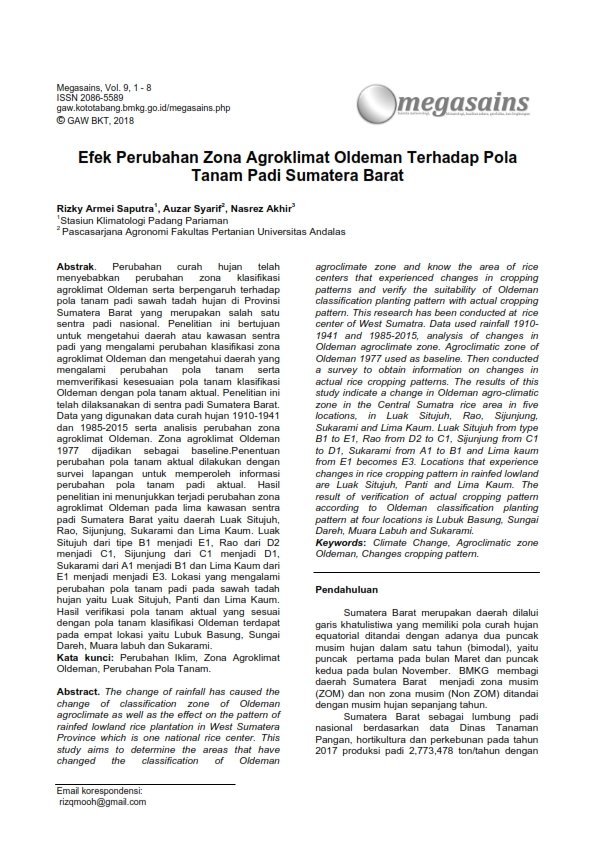Effect of Oldeman Agroclimatic Zone Changes on Patterns Planting Rice in West Sumatra
Main Article Content
Abstract
The change of rainfall has caused the change of classification zone of Oldeman agroclimate as well as the effect on the pattern of rainfed lowland rice plantation in West Sumatera Province which is one national rice center. This study aims to determine the areas that have changed the classification of Oldeman agroclimate zone and know the area of rice centers that experienced changes in cropping patterns and verify the suitability of Oldeman classification planting pattern with actual cropping pattern. This research has been conducted at rice center of West Sumatra. Data used rainfall 1910- 1941 and 1985-2015, analysis of changes in Oldeman agroclimate zone. Agroclimatic zone of Oldeman 1977 used as baseline. Then conducted a survey to obtain information on changes in actual rice cropping patterns. The results of this study indicate a change in Oldeman agro-climatic zone in the Central Sumatra rice area in five locations, in Luak Situjuh, Rao, Sijunjung, Sukarami and Lima Kaum. Luak Situjuh from type B1 to E1, Rao from D2 to C1, Sijunjung from C1 to D1, Sukarami from A1 to B1 and Lima kaum from E1 becomes E3. Locations that experience changes in rice cropping pattern in rainfed lowland are Luak Situjuh, Panti and Lima Kaum. The result of verification of actual cropping pattern according to Oldeman classification planting pattern at four locations is Lubuk Basung, Sungai Dareh, Muara Labuh and Sukarami.
Article Details

This work is licensed under a Creative Commons Attribution-NonCommercial 4.0 International License.
The author is willing to retain the copyright and grant journal rights to the first publication with works that are simultaneously under license the Creative Commons Attribution-NonCommercial-NoDerivatives 4.0 International. It allowing the others to share the work with recognition of the author's work and the initial publication in this journal.
Authors can enter into separate additional contractual arrangements for the non-exclusive distribution of published versions of journal works (for example, posting them to institutional repositories or publishing them in a book), with recognition of the initial publications in this journal.
Authors are permitted and encouraged to send their work online (for example, in their institutional repositories or websites) before and during the submission process because it can lead to productive exchanges, as well as previous and larger citations of published works.

